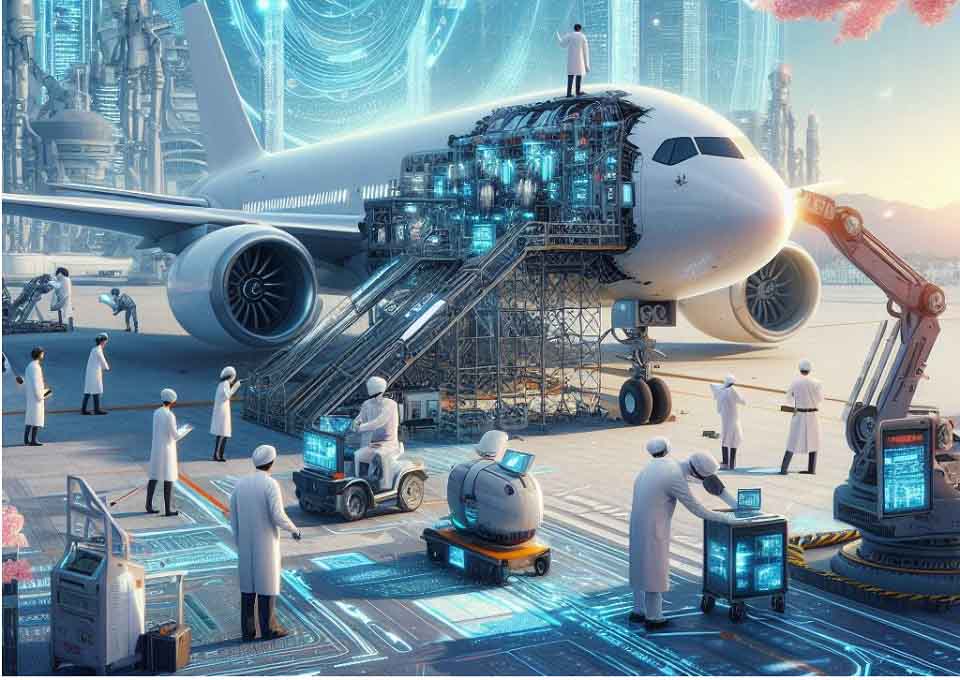Aviation
Japan to Construct Second Passenger Jet Following First’s Setback

The Japanese government is set to collaborate with a private firm to construct a new passenger jet, a project expected to require approximately USD 33 billion. The anticipated outcome of this endeavor could materialize by 2035, aiming to significantly reduce carbon emissions and establish a new standard in eco-friendly aviation.
Japan is strategically focused on developing its passenger aircraft to compete globally, following a previous unsuccessful attempt with the Mitsubishi Regional Jet, which failed to gain approval from the FAA and other aviation authorities. After years of research, the decision was made to innovate by revamping the aircraft and introducing a unique hydrogen-powered engine concept.
While concrete plans are yet to be finalized, discussions revolve around various propulsion technologies, including hybrid electric systems and hydrogen combustion or fuel cell technologies. Notably, hydrogen emerges as a prominent contender, with the Japanese Ministry of Economy, Trade and Industry (METI) emphasizing the importance of leveraging Japan’s competitive advantage in technological innovation to drive the decarbonization of air transport.
Video: The First MRJ regional Plane from Japan is scrapped in the United States
Numerous aerospace companies are already pioneering hydrogen-powered electric aircraft as a promising solution to combat carbon emissions. Companies such as ZeroAvia and Universal Hydrogen are at the forefront, with projects ranging from small regional planes to larger passenger aircraft, reflecting a concerted effort towards sustainable aviation.
In parallel, collaborations between budget airlines like EasyJet, engine manufacturers like Rolls-Royce, and industry giants like Airbus underscore the collective commitment towards developing hydrogen-powered aircraft. Airbus, for instance, aims to introduce hydrogen-powered planes into commercial service by 2035.
Despite setbacks like the failed SpaceJet aircraft program, which incurred substantial costs without achieving liftoff, Japan remains undeterred. The country’s new aircraft venture indirectly challenges competitors like China’s COMAC C919, signaling Japan’s determination to carve out a significant presence in the aerospace industry.
Additionally, Japan’s collaboration with Britain and Italy in developing a sixth-generation fighter jet highlights its pursuit of cutting-edge aviation technology. This advanced fighter jet, featuring Rolls-Royce engines, laser targeting systems, and three-dimensional thrust vectoring engine nozzles, represents a leap forward in military aviation capabilities.
Under an MOU agreement, Japan retains the option to export these fighter jets to allied nations, potentially reshaping the global landscape of military aircraft manufacturing and distribution. With these ambitious projects, Japan aims to assert itself as a leader in both commercial and military aviation, pushing the boundaries of innovation and sustainability in the aerospace sector.
Watch Video : Japan to Construct Second Passenger Jet Following First’s Setback

Aviation
Boeing, Antonov to Collaborate on Defense Projects

– MOU represents Boeing’s commitment to work with Ukrainian industry
– Includes exploring opportunities for collaborating on in-country support of Unmanned Aerial Systems
A Memorandum of Understanding was signed today by Boeing and Antonov Company to investigate potential collaboration on defense-related projects.
“We’re happy to keep collaborating with the Antonov Company to help Ukraine’s economic development and expansion,” stated Ted Colbert, CEO and president of Boeing Defence, Space, & Security.
Airbus and the Antonov An-225: The Best Partnership:Click here
“This agreement demonstrates our ongoing efforts to find more opportunities to work with Ukrainian industry, which was underscored by our signing of the Ukrainian Defence Industry Compact earlier this year.”
The areas of potential collaboration identified in the agreement consist of training, logistical support and overhaul services for tactical Unmanned Aerial Systems utilized by the Ukrainian Armed Forces, which includes the ScanEagle. In addition, the companies will also explore opportunities for Antonov to provide engineering support to Boeing.
The six largest cargo aircraft ever built in the aviation industry:Click here
“A strong, innovative, and efficient defense industry is key to sustainable economic development and national security, and we are extremely excited to collaborate with Boeing,” said Ievhen Gavrylov, CEO of Antonov Company.
This agreement brings a whole new level of opportunity to implement the latest and most effective solutions – in addition to the possibility of future projects with Boeing in the aerospace and defense industry.”
-

 Travel1 week ago
Travel1 week agoAir India to Expand US Operations with Three New Routes After a Decade
-

 Travel2 weeks ago
Travel2 weeks agoWhy We Should Avoid These Stamps in a Passport
-

 Airlines1 month ago
Airlines1 month agoInvestigations Reveal Fake Chinese Titanium in Boeing and Airbus Jets
-

 Tech4 weeks ago
Tech4 weeks agoChina’s CATL Plans 1,800-Mile Electric Plane Launch by 2027
-

 Airport3 days ago
Airport3 days agoTop 10 Largest Airports in the World by Size
-

 Aerospace4 weeks ago
Aerospace4 weeks agoChina’s Fighter Jets Turn Wings into Autonomous Drones
-

 Airlines4 days ago
Airlines4 days agoAir India Rolls Out A350s for Delhi-New York JFK and Newark Routes
-

 Defence3 weeks ago
Defence3 weeks agoBoeing Enhances Chinook with New Engines and Block II Upgrades at $96 Million







